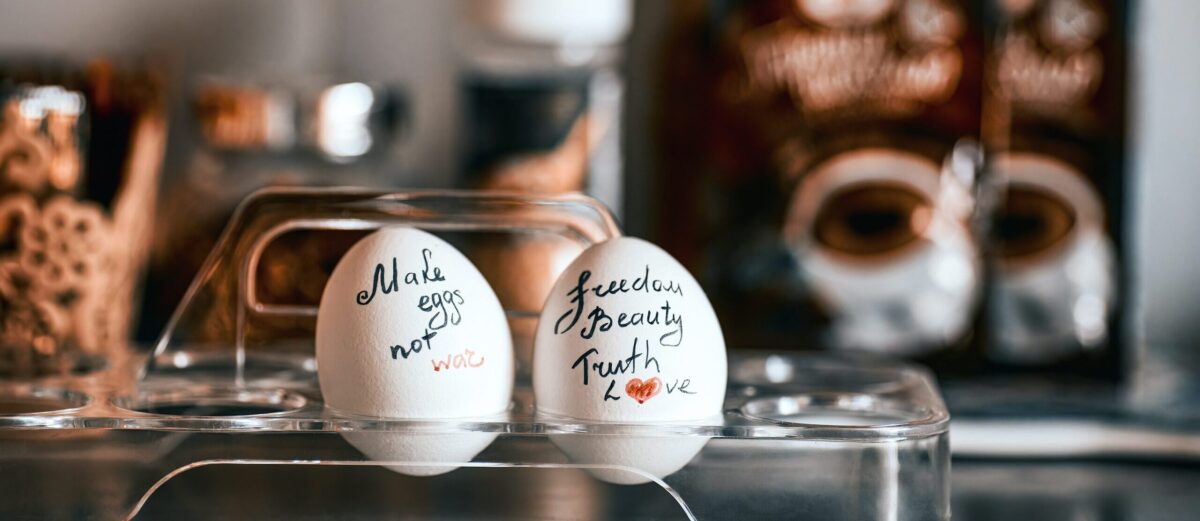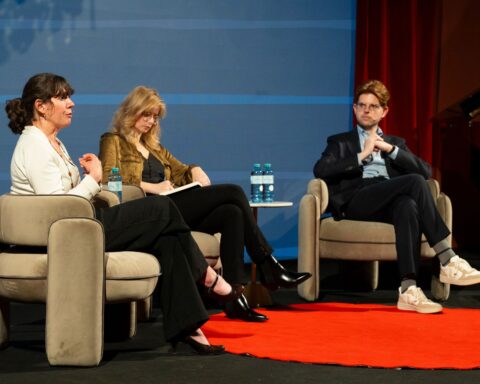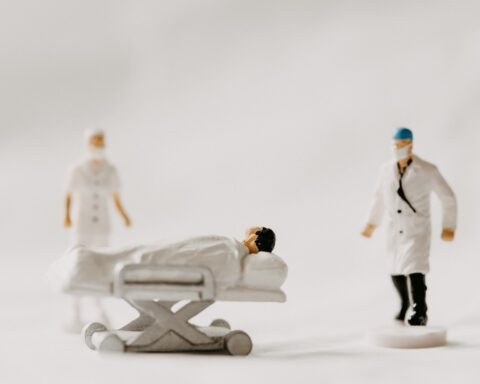No, social freezing has nothing to do with the pandemic and self-isolation. Social freezing involves the preserving and storing of a woman’s oocytes, or egg cells, until pregnancy is desired. Egg freezing, medically known as oocyte cryopreservation, has always been an optional procedure that helps preserve fertility for women battling illnesses that may affect their childbearing capacity, for instance, cancer patients. It is a procedure during which a patient’s egg cells are harvested, medically frozen and securely stored. Preserving their egg cells gives these women the opportunity to become pregnant in later years through artificial insemination, after completing cancer treatment or when they are physically well again.
Social freezing, on the other hand and as the name suggests, is the preservation of a woman’s gametes for non-medical purposes. These non-medical, or ‘social’ reasons can be results that arise from lifestyle choices and circumstances, with common reasons being not having a partner with whom to have children; having a partner who was unwilling to commit to parenthood; wanting time to prepare financially, emotionally, and socially for single parenthood; investing in the future; and using egg freezing as an insurance against not finding a partner while still able to have children. Research from Yale University found the main reason women freeze their eggs is due to the absence of a partner. Freezing halts the ageing process of the egg cells, meaning that they can be fertilized at the desired time, in their original quality – a time deemed fit by the potential mother.
In other words, social freezing is buying time for deferred childbearing while the woman contemplates on her life choices and circumstances.
Social shifts
Egg freezing was developed in the 1980s and historically catered to women with serious medical conditions who wanted the option to have a baby later in life. Up until about a decade ago, clinicians mostly recommended it for female cancer patients whose fertility may be at risk as a result of cancer treatment. In 2012, the American Society for Reproductive Medicine removed the ‘experimental’ label from the procedure, paving the way for ‘social’ or ‘elective’ egg freezing to grow in popularity.
In the last decade, this procedure has somewhat gone through a makeover, thanks to the sprouting of fertility startups marketing it as essential for the everyday, liberated woman, under the banner of ‘self-care’. These fertility clinics such as Kindbody (U.S.), Prelude Fertility (U.S.), Ova IVF (Switzerland), Ova (India), among many others, have sprung up due to the increasing appearance of the social freezing issue in the news over the past decade as technological advances, celebrity endorsement and women empowerment make the procedure more widely known and available. They have transformed egg freezing from a strictly medical procedure that happens in a clinical environment to a wellness and boutique experience that not only offers convenience and comfort, but also empowerment.
Source: Grand View Research
Over the years, egg freezing has ballooned in popularity; in 2017, 10,936 women in the U.S. froze their eggs – 23 times more women than in 2009, according to an American study published in 2017 by the Society for Assisted Reproductive Technology (SART). Corporations such as Apple and Facebook now offer egg freezing as an employee benefit. The appeal of social freezing has always been about the promise of more time – time to find the right partner, advance professionally and make more money – to consider motherhood.
A hefty price tag
This buying of time comes with a price tag which not many can afford. Take a look at the costs stated on the website of a fertility center in Chicago, and you get the idea.
While the costs depend on the clinic, and vary largely from patient to patient, the average egg freezing patient will spend US$30,000 to US$40,000 (based on two cycles, the minimum that most women undergo) on treatment and storage, according to FertilityIQ. The costs also correspond to regional differences, for instance, the cost of an egg-freezing cycle can range from US$13,800 in Boston to US$17,773 in New York City.
Source: FertilityIQ data
Between a rock and a hard place
It is also noteworthy to point out that the vast majority of patients who undergo the procedure don’t end up using their frozen eggs. The usage rate for frozen eggs ranges from about 3% to 9%. At one of Europe’s biggest fertility centres, the Brussels Centre for Reproductive Medicine in Belgium, only 7.6% of women have returned to thaw their eggs and try for a pregnancy. And only one-third of those have been successful.
This is also the reason why women contemplating social freezing can find themselves in a conundrum – the younger a woman is when she banks her oocytes, the better the likelihood that she could have a successful pregnancy, but the lower the likelihood that those eggs will get used, because there is more time for her life plan to unfold. The older she is, on the other hand, the higher the likelihood that those eggs will get used, but the lower the chance of successful pregnancy.
This also brings about the ethical decision of what the woman does with unused eggs should she no longer need them. She may be faced with the moral dilemma of whether to donate or discard them. This predicament of an entitled woman would be an unattainable privilege for the woman who wishes for but cannot realise the social freezing procedure due to a lack of funds.
All in all, women who can afford the procedure would feel liberated, having agency over their body and lifestyle choices, while those who cannot, would have to submit to the laws of nature.
Legality and controversy in different countries
For women with a sound financial background, the journey of social freezing may not always be smooth sailing. As laws differ from country to country, depending on where they live, some may not have access to social freezing in their country, or are subject to restrictions such as having to be legally married before they can choose to carry out the procedure. Austria and China are countries, for instance, where egg freezing for social reasons is currently not allowed. Singapore is another country that prohibits a healthy woman from freezing her eggs, although this may change in 2023, with the government currently calling for the legalization of social freezing for women aged 21 to 35. In Hong Kong, single women can freeze their eggs but need to be married to actually fertilize them, and are given a period of up to ten years to do so, or before they turn 55 years of age.
Such prohibition and restrictions give rise to “reproductive travellers” who would have to make trips to other countries to have the procedure performed, often increasing the risks that come with such a procedure.
“The procedure is surrounded by value conflicts and diverse viewpoints, particularly when non-medical or ‘social’ reasons are involved.”
Even in countries where egg freezing is allowed for medical and social reasons, such as the Netherlands, the procedure is surrounded by value conflicts and diverse viewpoints, particularly when non-medical or ‘social’ reasons are involved. The debate is often controversial and shaped by normative perceptions of the life course, including concepts regarding reproductive ageing, gender, motherhood and biomedicalization.
Although social freezing is allowed in Australia, women are not getting the financial support from the government as they hope to be, according to a survey conducted by Monash University researchers. The procedure is currently only subsidized by the national healthcare system when a woman has a condition affecting her fertility, such as severe endometriosis or cancer requiring chemotherapy. A 2020 report by the Victorian Assisted Reproductive Treatment Authority stated that there were 4,048 Victorian women with frozen eggs in storage. This comprises only 0.12% of the Victorian female population of 3.3 million. Nonetheless, across Australia and New Zealand, the number of egg freezing cycles carried out yearly rose by an estimated 860% between 2010 and 2018.
In Japan, the city of Urayasu is helping women cover the cost of freezing their eggs in order to boost the country’s declining birth rate. Under this initiative, women will pay 20% of the usual cost of the procedure.
Despite the high cost which is a major deterrence of social freezing in most countries, more and more women are turning to this procedure to preserve their future fertility as a form of social insurance.
‘Biological clock’ and societal pressure
Social freezing certainly increases reproductive options for women and improves their ability to organize their work, education and family building with less pressure from their ‘biological clock’. It may also allow women time to establish desired relationships to prepare for parenthood, which reduces the pressure to raise a child when not yet psychologically, socially or financially ready.
The reproductive window for women is smaller than men’s. The oldest woman to become a mother was 66 years old when she gave birth to twins through in vitro fertilization with donor eggs, while the oldest man to become a father was 92 years old. In this circumstance, social freezing can contribute to equality of men and women by extending the time when women want to start a family, and lessen the educational and workplace constraints that burden women.
“Many view social freezing as a scientific blessing for women who wish to defer the option of having children later in life. However, it may also invite risk of commercial exploitation.”
Given the ‘biological clock’ and social pressures on women to conceive, many view social freezing as a scientific blessing for women who wish to defer the option of having children later in life. However, critics are less than convinced that given the invasive nature of the procedure, affordability, efficacy and safety, and the morality of fertility clinics promising motherhood, that social freezing is the ultimate insurance to preserve a woman’s future fertility.
If anything, it may give women and couples false security about their ability to have children in the future. It may also invite risk of commercial exploitation, such as fertility clinics marketing social freezing as female liberation and calling on younger, healthy women to freeze their oocytes, who may not have the need for the procedure after all, or giving hope to older women whose success rate in reality is lower than promised.
Expressions of concern about older parenthood may also be an issue to address. Not having young mothers or parents may not be fair to children. Imagine when the mother or parents retire, their child has not even finished high school, or in worse cases, the parent dies without witnessing the growing up of their child, such as the case with both the oldest woman and man who died when their children were three and eight years old respectively. However, the Ethics Committee of the American Society for Reproductive Medicine argues that the risk of children being born to a person with a potentially shortened lifespan is not a reason to deny their reproductive treatment.
A form of female empowerment or smoke and mirrors?
So does social freezing enhance a woman’s reproductive autonomy? Goldman Sachs, who recently jumped on the bandwagon to join Apple and Facebook to offer egg freezing benefits for female employees, states that their decision is aimed at helping same-sex couples who want to become parents, women who are struggling to conceive, and those who decide to have children later in life. These corporations have already been criticized for the creation of such a fertility resource for non-medical reasons, with moral and social aspects, and medical consequences predominating the discussion.
Will we see social freezing bring about a positive culture shift, stopping women from feeling like their ‘biological clock’ is ticking and giving them the empowerment to regain control of their own bodies and plan ahead? Or will there be a negative impact on motherhood, with older and frailer mothers who have prioritized their own desires and career above having children? In the last decade, social freezing has undoubtedly provided women with more freedom of choice, but it remains to be seen whether social freezing is a smokescreen to keep women working longer and focused on other lifestyle choices under the banner of female empowerment.





